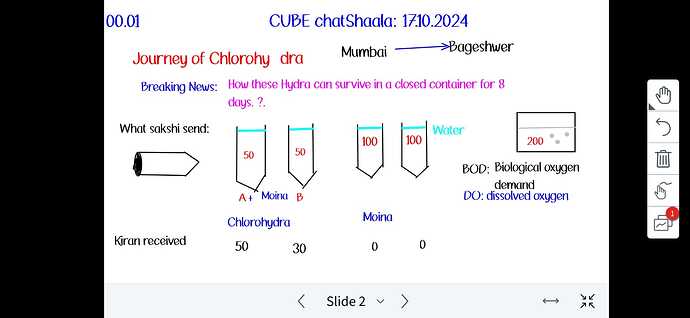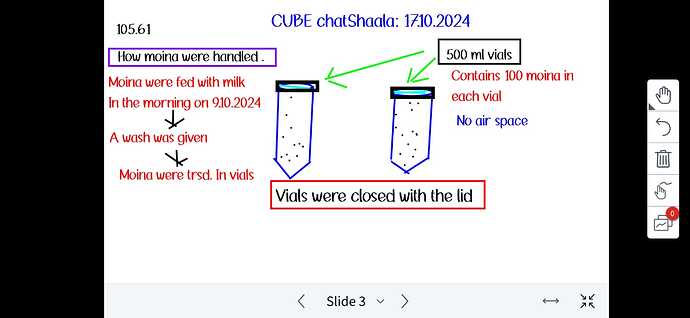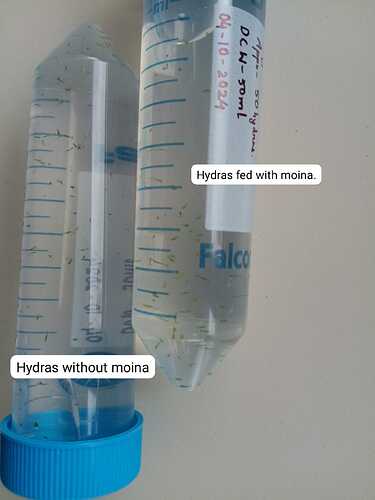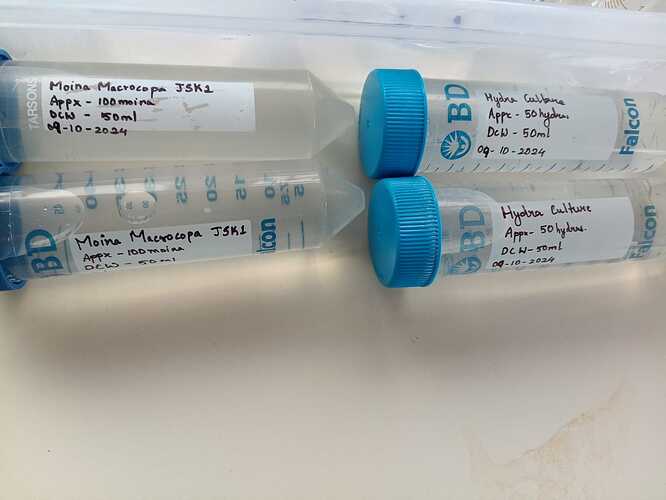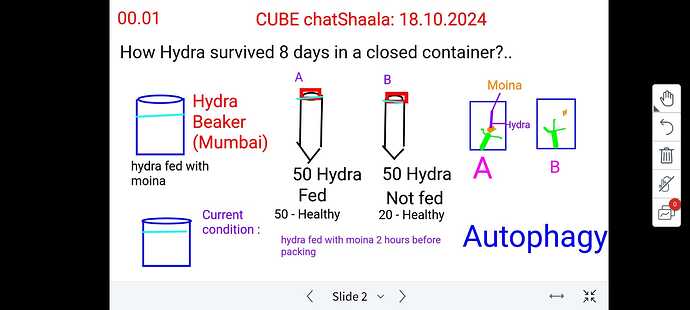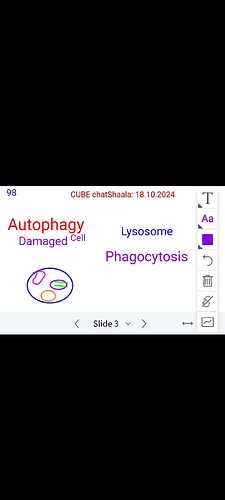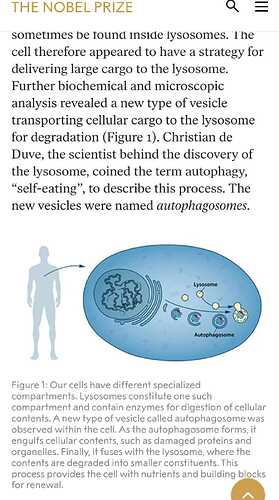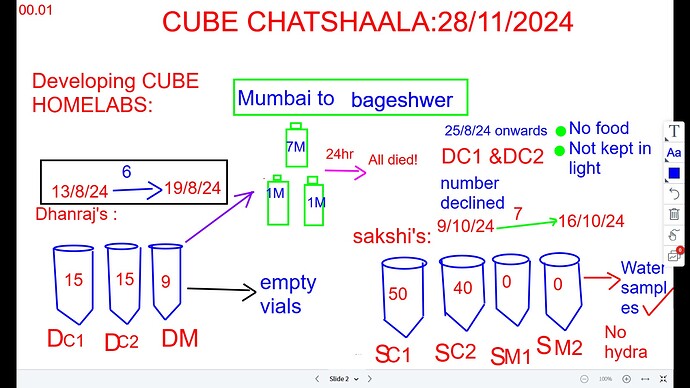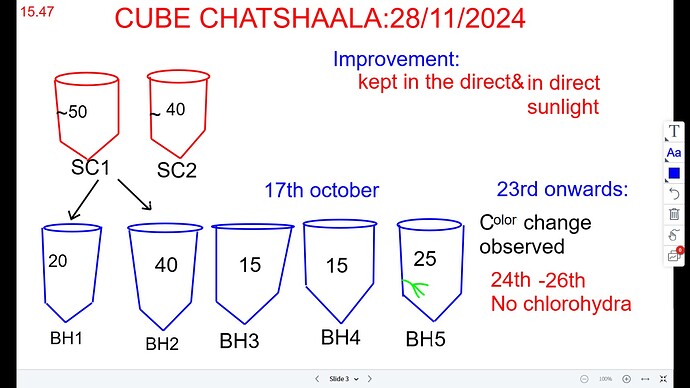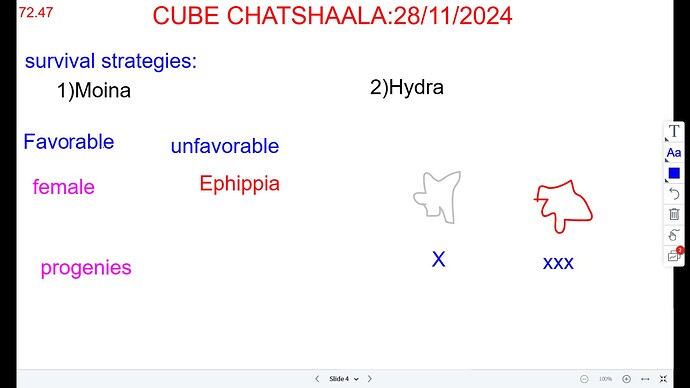Sakshi sent two vials of Chlorohydra and two vials of Moina from Mumbai to Bageshwar. Two vials of Chlorohydra contains 50 each , and two vials of Moina contains 100 each.
Hydra viridissima is commonly called green hydra due to its coloration, which is due to the symbiotic green algae Chlorella vulgaris which live within its body.
Hydra viridissima - Wikipedia.
I have approx 70-80 healthy Chlorohydra in 5 different containers!!!..
Date of photo: 18.10.2024
Location: Bagheshwar Uttrakhand
Data collector: Kiran K.
Questions addressed:
1)What is food used by Cubists to feed hydra and moina.
Moina is used as food for hydra, and they (moina) are fed drops of milk, which contains lactose. Bacteria can utilize this lactose & multiply in number.
2)Chlorohydra is a fresh water organism ,how to access the BOD of a water and what is BOD?
BOD stands for biochemical oxygen demand, which is a measurement of how much oxygen is consumed by microorganisms as they break down organic matter in water. BOD is a key indicator of water quality and is used to assess the degree of organic pollution in water.
Biochemical oxygen demand (also known as BOD or biological oxygen demand) is an analytical parameter representing the amount of dissolved oxygen (DO) consumed by aerobic bacteria growing on the organic material present in a water sample at a specific temperature over a specific time period.
Less bacteria :more Dissolved oxygen: low BOD :good quality water
Chlorohydra in the vials survived for 8 days during the journey from Mumbai to Bageshwar.
Survival strategies discussed:
- Autophagy
(aw-TAH-fuh-jee) A process by which a cell breaks down and destroys old, damaged, or abnormal proteins and other substances in its cytoplasm (the fluid inside a cell). The breakdown products are then recycled for important cell functions, especially during periods of stress or starvation.NCI Dictionary of Cancer Terms
Autophagy (or autophagocytosis; from the Greek αὐτόφαγος, autóphagos, meaning “self-devouring”[1] and κύτος, kýtos, meaning “hollow”)[2] is the natural, conserved degradation of the cell that removes unnecessary or dysfunctional components through a lysosome-dependent regulated mechanism.[3https://en.m.wikipedia.org/wiki/Autophagy
Related references:
[18/10, 9:35 pm] Theertha: Hydra polyps are amazingly resistant to starvation as they are able to survive long periods of food depletion, even longer than four weeks. https://www.sciencedirect.com/science/article/pii/S0167488909000822
[18/10, 9:35 pm] Theertha: https://www.sciencedirect.com/science/article/abs/pii/S0076687908032266
[18/10, 9:35 pm] Theertha: (aw-TAH-fuh-jee) A process by which a cell breaks down and destroys old, damaged, or abnormal proteins and other substances in its cytoplasm (the fluid inside a cell). The breakdown products are then recycled for important cell functions, especially during periods of stress or starvation.NCI Dictionary of Cancer Terms
[18/10, 9:35 pm] Theertha: Autophagy (pronounced “ah-TAH-fah-gee”) is your body’s process of reusing old and damaged cell parts. Cells are the basic building blocks of every tissue and organ in your body. Each cell contains multiple parts that keep it functioning. Over time, these parts can become defective or stop working. They become litter, or junk, inside an otherwise healthy cell.
Autophagy is your body’s cellular recycling system. It allows a cell to disassemble its junk parts and repurpose the salvageable bits and pieces into new, usable cell parts. A cell can discard the parts it doesn’t need. Autophagy: Definition, Process, Fasting & Signs
[18/10, 9:35 pm] Theertha: A process by which a cell breaks down and destroys old, damaged, or abnormal proteins and other substances in its cytoplasm (the fluid inside a cell). The breakdown products are then recycled for important cell functions, especially during periods of stress or starvation. Autophagy also helps destroy bacteria and viruses that cause infection and may prevent normal cells from becoming cancer cells. Once cancer has formed, autophagy may protect the cancer cells by providing extra nutrients to them or by keeping anticancer drugs or other substances from destroying them. Autophagy may also affect the body’s immune response against viruses, bacteria, and cancer cells.NCI Dictionary of Cancer Terms
[18/10, 9:36 pm] Theertha: What is autophagy?
Autophagy (pronounced “ah-TAH-fah-gee”) is your body’s process of reusing old and damaged cell parts. Cells are the basic building blocks of every tissue and organ in your body. Each cell contains multiple parts that keep it functioning. Over time, these parts can become defective or stop working. They become litter, or junk, inside an otherwise healthy cell.
Autophagy is your body’s cellular recycling system. It allows a cell to disassemble its junk parts and repurpose the salvageable bits and pieces into new, usable cell parts. A cell can discard the parts it doesn’t need. Autophagy: Definition, Process, Fasting & Signs
[18/10, 9:36 pm] Theertha: Autophagy (or autophagocytosis; from the Greek αὐτόφαγος, autóphagos, meaning “self-devouring”[1] and κύτος, kýtos, meaning “hollow”)[2] is the natural, conserved degradation of the cell that removes unnecessary or dysfunctional components through a lysosome-dependent regulated mechanism.[3https://en.m.wikipedia.org/wiki/Autophagy
The word autophagy originates from the Greek words auto-, meaning “self”, and phagein, meaning “to eat”. Thus,autophagy denotes “self eating”. This concept emerged during the 1960’s, when researchers first observed that the cell could destroy its own contents by enclosing it in membranes, forming sack-like vesicles that were transported to a recycling compartment, called the lysosome, for degradation.
